This is a continuation of testing of the following macro lenses :
- Sony 90mm f/2.8 FE Macro
- Leica 100mm f/2.8 Apo Macro-Elmarit-R
- Zeiss 100mm f/2 Makro-Planar ZF
- Nikon 105mm f/2.8 Micro-Nikkor G VR
The test starts here:
I have done longitudinal chromatic aberration (LoCA) studies on each of the lenses in this test. I’ve started doing some rendering studies. I got to wondering how rendering is affected by LoCA. Is the Leica 90/2 Apo-Summicron-M ASPH in the previous medium telephoto test such a good image renderer because it has a lot of LoCA, in spite of the fact that it has a lot of LoCA? Same with teh Leica 100mm macro in this test. It’s probably impossible to tell for sure, but while I was thinking about it, it occurred to me that I had a lens with very little LoCA.
Or maybe not.
I thought that the Coastal 60mm f/4 UV-VIS-IR macro lens should have very little LoCA in the visible region, since it is supposedly corrected for infrared and ultraviolet, too. But I’d never tested it for LoCA.
Today, I fixed that.
For those of you coming in late, here’s a review of the test procedure:
Here are the results at f/4:
The vertical axis is MTF50, measured in cycles per picture height (cy/ph). The horizontal axis is camera position shift in mm. The points on the left side of the graph are with the camera farther away from the subject than the points on the right. I used a 50 um (0.05 mm) step size. The three raw channels are plotted. They all peak at essentially the same place. That means no LoCA.
At f/5.6:
None there, either.
At f/8:
Now there is a tiny bit, with the blue channel peaking with the subject a little farther away than the red channel, The difference is about bout 100 um, or 0.1 mm, or the average diameter of a strand of human hair.
At f/11:
Any LoCA will be swallowed up by the depth of field.
OK, so this is a great lens if you care about LoCA. How about focus shift?
Not so much.
You can focus wide open and stop down to f/5.6 and still get sharp images, but at f/8 and f/11 you had better focus at the taking aperture.
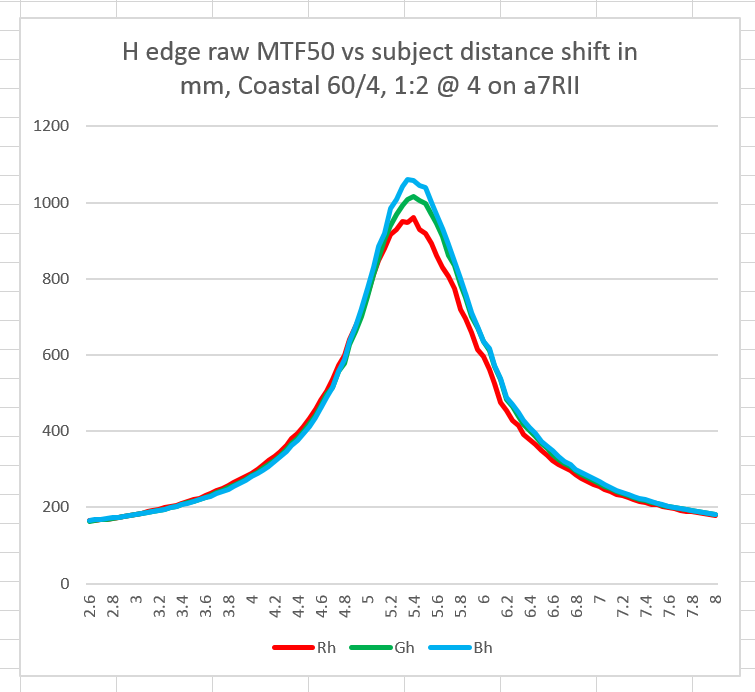
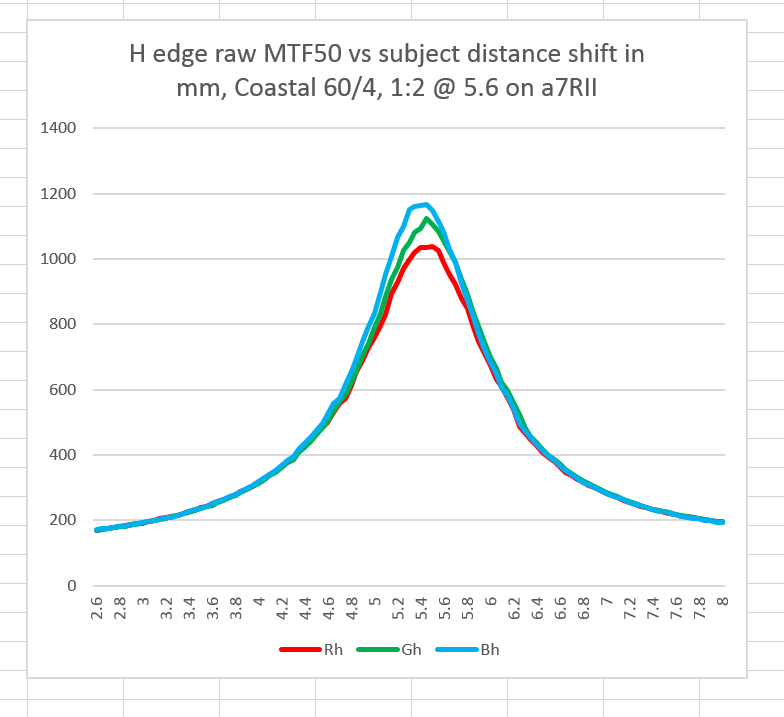
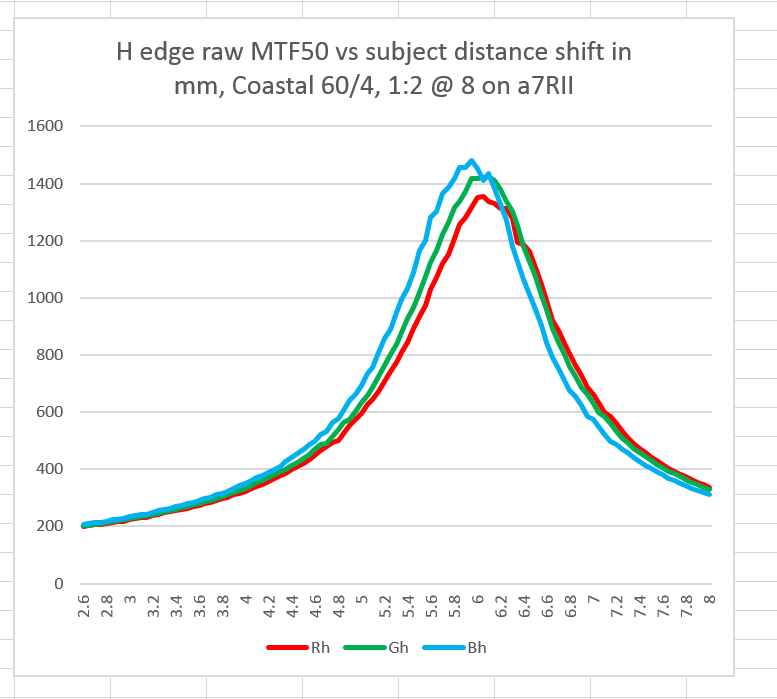
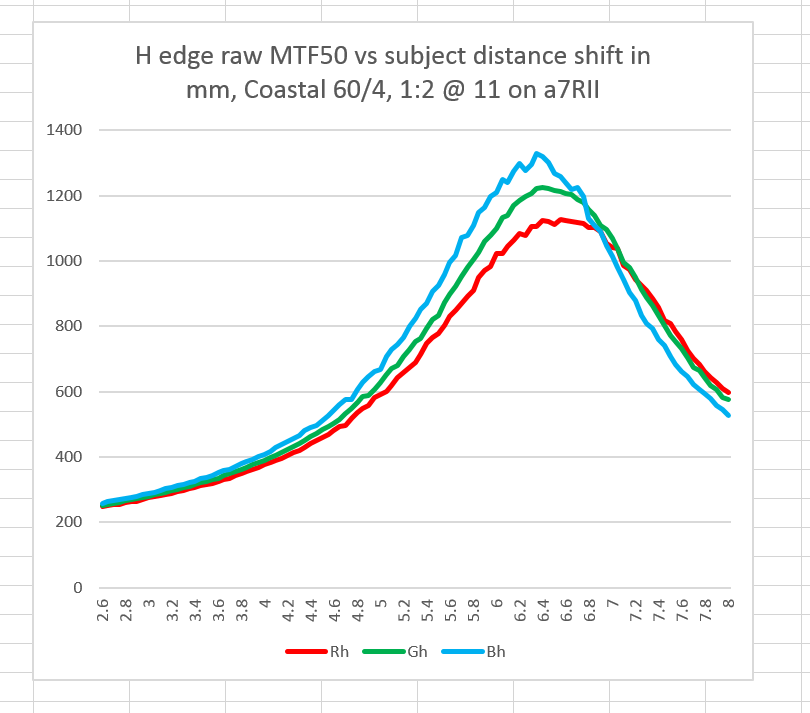
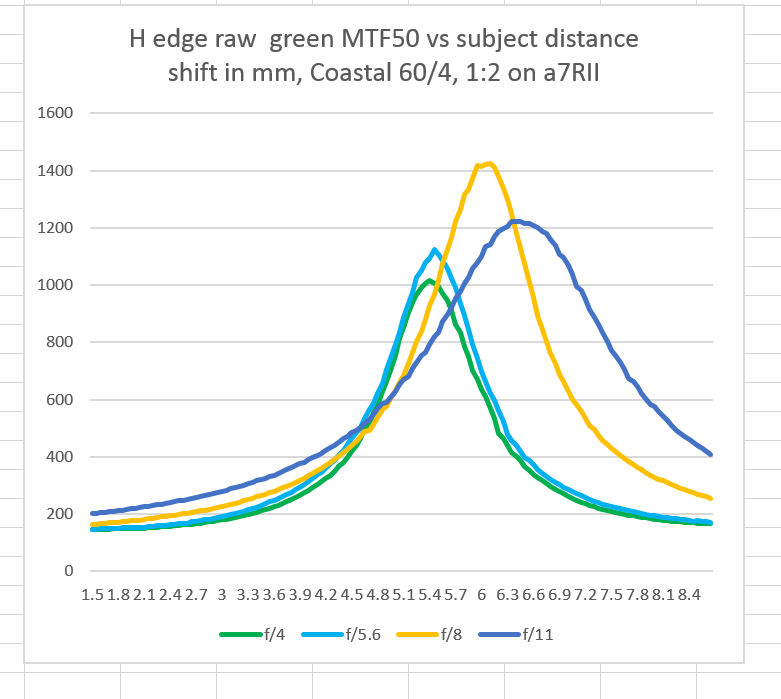
Interesting that this lens gives its best ‘sharpness’ at f/8, versus the others that seemed to peak at about half that. Does this mean that LoCA corrections cause a somewhat strong compromise in overall sharpness?
So this lens doesn’t have perfectly corrected spherical aberration, but it’s matched between all the wavelengths. I guess that’s what you can get with tons of fluorite.
I wonder why it performs better at f/8 than the longer macro lenses.
The green channel peak is at 1400 cy/ph vs 1350 for the Sony. I’m not sure that’s outside the margin of error. I haven’t shown you the white-balanced curves, but it’s no surprise that the Coastal walks away from the others at f/8, since all the raw channels are pulling together.
Jim
What exactly *is* the margin of error?
These things seem like they should be very repeatable, at least for your camera and your copy of the lenses, what with the computer-driven focus rail, and especially at f/8 where the peak sharpness is spread across more than one position.
I don’t really know the margin of error. You can see from the little wiggles in the curves that there’s some noise even within a particular setup. Sources of error between lenses include alignment of the lens axis orthogonal to the razor blade, vertical positioning, and light levels. To really find out, I’d have to repeat a test over and over tearing down and setting up in between, and I don’t have the patience for that.
However, I’ve done some more analysis, and the Coastal is better not only at f/8, but at f/11, and it looks real. I’ll be posting some more graphs today on that subject. Also, the MTF50 difference that I referenced earlier from eyeballing the curves is too low now that I look at the numbers.
Jim
Jim